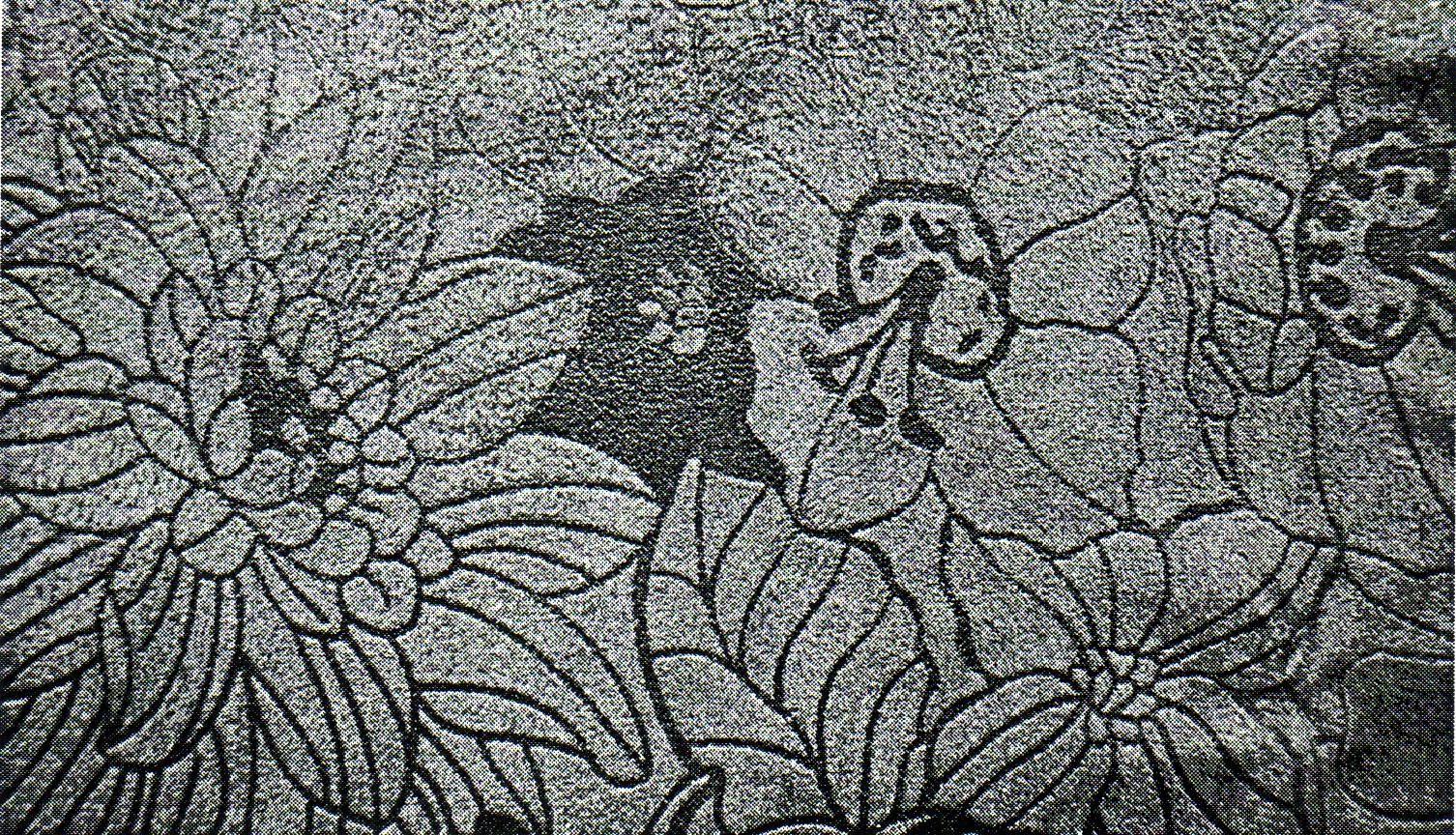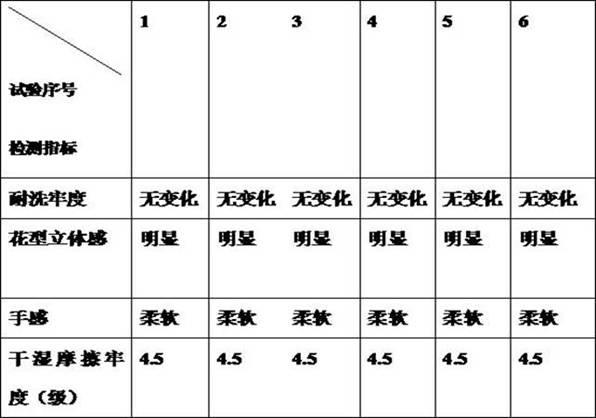Real leather suede leather stereoscopic printing paste and preparation method
A three-dimensional printing, suede technology, applied in the direction of dyeing, textile and papermaking, etc., to achieve the effect of strong three-dimensional sense, strong adhesion and strong adhesion
- Summary
- Abstract
- Description
- Claims
- Application Information
AI Technical Summary
Problems solved by technology
Method used
Image
Examples
Embodiment 1
[0023] Polyethylene glycol (number average molecular weight 2000) 110g;
[0024] Polypropylene glycol (number average molecular weight 2000) 60g;
[0025] Trimethylolpropane 2g;
[0026] 1,4-butanediol 3 g;
[0027] 1. 2-butanediol 3 g;
[0028] 1. 40.6g of 6-hexamethylene diisocyanate (HDI);
[0029] N-methylpyrrolidone 60g;
[0030] Dibutyltin dilaurate 0.05g;
[0031] Add the above-mentioned raw materials to a four-necked flask equipped with a reflux condenser, a thermometer, and a stirrer in turn, and pass through dry nitrogen protection. The reaction temperature is 80°C, and the reaction time is 5 hours to prepare a polyurethane prepolymer. Cool to 30°C, Put it into the emulsification kettle, start stirring, add 2 g of methyl ethyl ketone oxime, 70 g of sodium bisulfite solution with a mass percentage content of 20%, 200 g of ice (-10°C ice made of deionized water), and deionized water at room temperature 224 g, 6 g of glacial acetic acid, stirred for 35 minutes to ...
Embodiment 2
[0033] Polyethylene glycol (number average molecular weight 1000) 160g;
[0034] Polypropylene glycol (number average molecular weight 1000) 60g;
[0035] Trimethylolpropane 3g;
[0036] 1,3-propanediol 2 g;
[0037] 1,4-butanediol 2.6g;
[0038] Neopentyl glycol 3g;
[0039] Toluene diisocyanate (TDI) 82.2g;
[0040] Acetone 60g;
[0041] Dibutyltin dilaurate 0.03g;
[0042] Add the above-mentioned raw materials to a four-necked flask equipped with a reflux condenser, a thermometer, and a stirrer in turn, and pass through dry nitrogen protection. The reaction temperature is 70°C, and the reaction time is 5.5 hours to prepare a polyurethane prepolymer. Cool to 25°C, Put it into the emulsification kettle, start stirring, add 2.5 g of methyl ethyl ketone oxime, 140 g of sodium bisulfite solution with a mass percentage content of 20%, 300 g of ice (-10°C ice made of deionized water), and deionized water at room temperature 326 g, 10 g of glacial acetic acid, stirred for 25...
Embodiment 3
[0044] Polyethylene glycol (number average molecular weight 1500) 150g;
[0045] Polypropylene glycol (number average molecular weight 2000) 100g;
[0046] Trimethylolpropane 3.5g;
[0047] Neopentyl glycol 8.2g;
[0048] 1. 31.1g of 6-hexamethylene diisocyanate (HDI);
[0049] Toluene diisocyanate (TDI) 32.2g;
[0050] Acetone 20g;
[0051] Butanone 20 g;
[0052] Dimethylformamide 20 g;
[0053] Dibutyltin dilaurate 0.03g;
[0054] Add the above-mentioned raw materials to a four-necked flask equipped with a reflux condenser, a thermometer, and a stirrer in turn, pass through dry nitrogen protection, the reaction temperature is 75°C, and the reaction time is 5.5 hours to prepare a polyurethane prepolymer, and cool to 25°C. Put it into the emulsification kettle, start stirring, add 3 g of methyl ethyl ketone oxime, 109 g of sodium bisulfite solution with a mass percentage content of 20%, 300 g of ice (-13°C ice made from deionized water), and deionized water at room tem...
PUM
 Login to View More
Login to View More Abstract
Description
Claims
Application Information
 Login to View More
Login to View More - R&D
- Intellectual Property
- Life Sciences
- Materials
- Tech Scout
- Unparalleled Data Quality
- Higher Quality Content
- 60% Fewer Hallucinations
Browse by: Latest US Patents, China's latest patents, Technical Efficacy Thesaurus, Application Domain, Technology Topic, Popular Technical Reports.
© 2025 PatSnap. All rights reserved.Legal|Privacy policy|Modern Slavery Act Transparency Statement|Sitemap|About US| Contact US: help@patsnap.com


